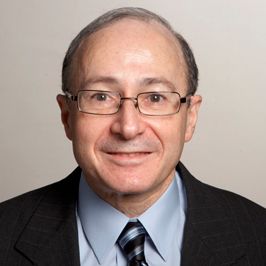Opinion
Video
Shifting the Paradigm for Plaque Psoriasis Therapy
Author(s):
Expert dermatologists discuss the paradigm shift occurring in the management of plaque psoriasis as a result of the expanded array of treatment options.
Bruce Strober, MD, PhD, FAAD: Jennifer, is there a paradigm shift occurring right now that you can foresee that defines how we approach psoriasis in 2023 moving into 2024 or from the way we did in 2015 to [20]18?
Jennifer Soung, MD: I always tell my residents I don’t use biologics in the order that they were FDA approved. We see a lot of times [that] step therapy will tell us to use [biologics] in that order, and so our newer biologics, [such as] the [IL-]23s, are my first line. Earlier, I talked about when a bio[logic]-naive patient comes to me and says, “I don’t know; I’m hesitant [about biologics]”. I think the [IL-]23s are such an easy way to ease them into the idea of a subcutaneous injection. A lot of patients still have some hesitation around that because they’re not used to it. But as there are more and more therapies outside of dermatology that are injectables, for example, this class of semaglutides that everybody wants to take, patients are now more open to the idea of injectables. Whereas I have some patients [with] psoriasis who have been on [IL-]23s and find [them] so convenient [that] they even ask me, “Don’t you have an injectable for acne?”
Bruce Strober, MD, PhD, FAAD: We wish [we did and] with the same level of efficacy. These are great points. What you’re pointing to is we’re intervening earlier with a mode of administration, subcutaneous injection, at an earlier time point. Maybe 7 to 10 years ago, there was greater fear of quickly going to the injectable. The specialty is more comfortable with it, and as you’re pointing out, maybe patients are more comfortable with it. Anything to add to this, Ben? This change in paradigm?
Benjamin Lockshin, MD, FAAD: At least in my practice, [we] have had utilization creep, where I’m treating patients with [less] body surface area because there’s less concern about safety signals. In addition, we have mounting legacy data with multiple different MOAs [mechanisms of action] that are providing us tremendous reassurance that the overall health benefit outweighs any of the risk that we see attributed to it. I always tell the patient that there’s a risk of doing and there’s a risk of not doing. Patients with psoriatic disease who are not being treated effectively are putting themselves at more risk than [with] the medications we’re giving them. And what you and Jen said earlier in terms of the understanding of an injectable [is important], because individuals now are familiar with the terms, see the ads, have friends that are on these medications, and we can articulate it better describing this as a large molecule that’s not absorbed through the gut and that’s why it’s administered that way, rather than their preconceived notion that this is taking the treatment to the next level, that it’s more severe than an oral, which [it] is not, as we all know.
Bruce Strober, MD, PhD, FAAD: I’ll go further. As a specialty, we are more aware of psoriatic arthritis [PSA]. We query our patients about signs and symptoms of PSA, and we appropriately incorporate the presentation of PSA into our treatment decisions. As a specialty, even 7 or 8 years ago, we were a little less sophisticated about psoriatic arthritis. Now that most of our therapeutics have FDA approval for the [management] of active psoriatic arthritis, we have greater confidence thinking about the disease, talking about it with patients, understanding what might indicate the presence of psoriatic arthritis, and how to follow patients over time for adequate [management] and control of their psoriatic arthritis. We’re at a different level with regard to how psoriasis affects patients holistically, and I didn’t even get into the comorbidities beyond psoriatic arthritis and how we understand psoriasis presents cardiovascular risk [and] requires regular visits to the provider for issues that create cardiovascular risk, diabetes, dyslipidemia, hypertension, [and] obesity. We know how to talk about these things better, and then we cartridge in our therapies in that conversation.
Jennifer Soung, MD: I’m going to add 1 more thing, Bruce. I’m so happy you brought up psoriatic arthritis because I don’t think we can make our treatment decision until we screen our patient for psoriatic arthritis, and that’s really been the biggest change. When I started as a dermatologist, I never thought I would be looking at joints, screening for joint involvement, or able to identify a sausage digit. But as dermatologists, because we have such amazing tools, we are in that key position where we can help those patients make that connection and [we can] say, “Patients with psoriasis can develop arthritis,” and patients often are surprised. [We are in] that position to help them identify earlier. For example, [we can] ask about back pain that wakes them up in the middle of the night or morning stiffness. If we wanted to make it easy and efficient, I like using the PEST [Psoriasis Epidemiology Screening Tool] questionnaire in my practice. It has a high positive predictive value and makes it easy in terms of patient flow. You’re not spending a lot of time [as] a rheumatologist would but identifying those patients who are at higher risk so you can make your next treatment decision.
Bruce Strober, MD, PhD, FAAD: Absolutely. I agree with you regarding the PEST questionnaire. I do a miniature PEST questionnaire in my head when I talk to patients with psoriasis whom I first meet. [As] you said, [I ask about] morning stiffness, being awakened in the middle of the night by joint pain, low back pain, stiffness, neck pain, ligament tissues [such as] carpal tunnel [syndrome], plantar fasciitis, Achilles tendonitis, and family history of psoriatic arthritis. One rheumatologist taught me one of the best questions you can ask your patients is, “Has a [physician] ever told you [that] you had psoriatic arthritis?” That will point you in the right direction.
Transcript is AI generated and edited for clarity and readability.





